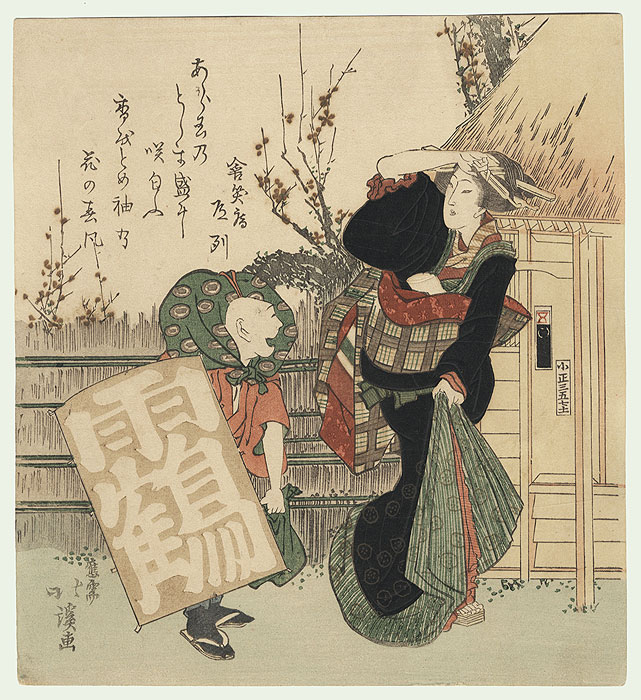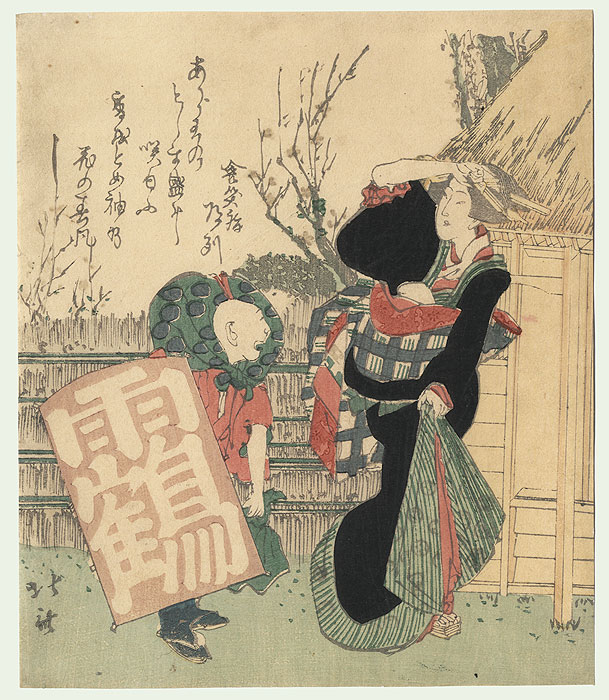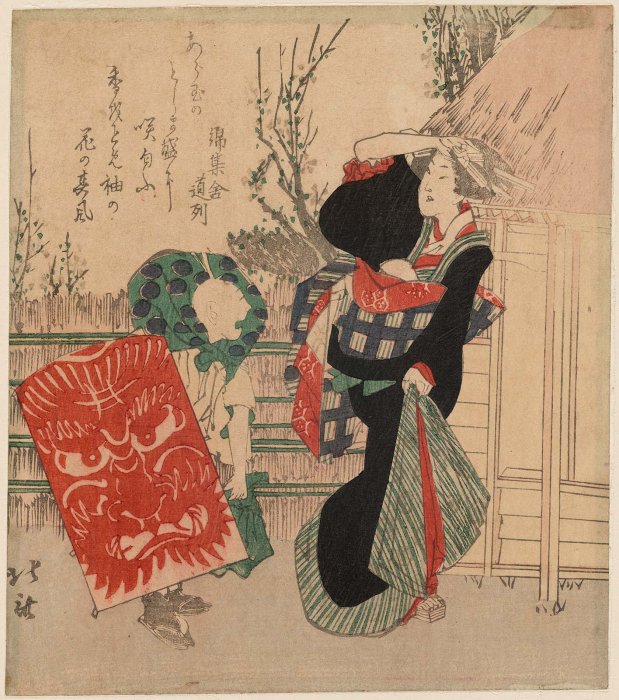| |
Hokkei
|
|
 |
 |
| "Beauty and Boy with a Kite" (1830) | "Beauty and Boy with a
Kite" Surimono as an Meiji Era Reprint |
| Image Size - 19.1 x 20.9 cm (7 1/2" x 8 1/4") | Image Size - 20.3 x 20.9 cm (7" x 8 1/4") |
| click
on surimono to see the differences |
Japanese Woodblock Surimono - Surimono
are an exclusive subcategory of Japanese wood block prints. They
were privately commissioned works intended to be distributed to
a small audience of friends, colleagues or like-minded members
of a "poetry circle".The most common surimono style included an
image and a poetry verse. Some surimono depict well-known
stories from ancient legend and are fantastic individual works
of art without any calligraphy. Because of the exclusive nature
of surimono, and the fact that they were commissioned by wealthy
individuals, the level of workmanship was excellent. The designs
are stunning, and usually printed to the highest standards on
expensive paper with fine pigments and embellishments. The
carvers and printers were leaders in their fields. Since
surimono were not sold to a commercial audience the print runs
were very small and original surimono are incredibly rare in the
market today.
Meiji Surimono Prints - During the
early Meiji period the original surimono publishing houses,
printed and redistributed some of their most famous surimono
designs. Designs by some of the most famous artists like;
Hokkei, Gakutei, Toyohiro and others were reprinted to an
audience interested in collecting these fantastic works of
art. In keeping with the surimono tradition, the Meiji
printings were equally exquisite, printed with the finest inks
and embellished with embossing, lacquered pigments, and other
design features. As most of the original blocks were still in
existence, they are mostly printed with the old blocks,
sometimes slightly repaired or altered as needed.
There are existing ones with different patterns on the kite, or with false signature (false signature: Hokusai ±±”È) and other alterations, see above.
- The most striking difference within the above detailed surimono reprint concerns the two tablets at the entrance of the original surimono. All reprints and newcuts do not have this item.
- Compare to the missing charcters under the left side of the kite in the original surimono.
- See the missing pattern on the black cloth of the lady's robe and the boy's scarf.
Prints of excellent surimonos were often copied or reprinted during the Meiji era (1868 - 1912). The above detailed surimono was reprinted several times (cf. also 1890s copy of 1820 design, also in the Museum of Fine Arts. Boston).
 |
| False signature (Hokusai ±±”È) , Red
Kite Design, and other alterations 1890s copy of 1820 design |
There are existing ones with different patterns on the kite, or with false signature (false signature: Hokusai ±±”È) and other alterations, see above.
back to the
main HOKKEI surimono page
Copyright 2008 ff: Hans P. Boehme